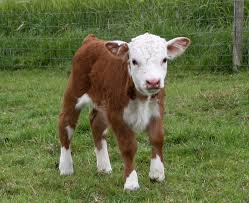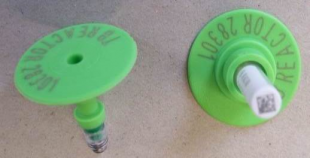Saira Cawthraw talks about DNA profiling at APHA and its use in combating rural crime.
DNA profiling at APHA

The Central Sequencing Unit at APHA Weybridge first began DNA profiling in 2009. Initially, this was to ensure the integrity of brain stem sampling for Transmissible Spongiform Encephalopathies (TSE) disease monitoring by providing evidence that samples came from the right animals. Since then DNA profiling at APHA has been used for a variety of reasons, depending on legislative and commercial requirements. Examples include:
- prove parentage of cattle before entry into the food chain, where no cattle passport was available
- resolve the provenance of sheep and cattle who have lost their ear tags
- deter cattle farmers from illegally swapping ear tags
- resolve rural crime
Background
DNA profiling is a technique used to identify individuals by characteristics of their DNA markers (a genetic marker is a gene or DNA sequence with a known location on a chromosome that can be used to identify individuals or species). These markers show a lot of size variation and the different sizes found at any given microsatellite marker will vary between individual animals just as the physical appearance does.

To detect these size variations, DNA is first isolated from the sample (blood, tissue or hair). Secondly the microsatellite markers are then amplified by the molecular method known as Polymerase Chain Reaction (PCR) and finally the size is determined by electrophoresis.
The animal may possess only two copies for a specific microsatellite marker, one inherited from its dam and the other from its sire. The size of at least one of the copies possessed by an offspring must match the presumed parents.
This is the basis of paternity identification. For identification of provenance, where samples from the same animal are compared, both copies for a specific microsatellite marker must match. For the cattle microsatellite identification test we compare ten markers and for the sheep microsatellite identification test we compare fourteen.
Combating rural crime
The technique of DNA profiling has been used in human forensics since 1990. More recently it has been used for wildlife investigations and now at APHA we are using it to combat rural fraud and other crimes.
Watch our ‘safeguarding with science’ video and hear Richard Ellis, Head of Genome Analyis, giving more information on how we use DNA sequencing.

To date, we have provided DNA evidence that has resulted in two criminal convictions relating to sheep rustling in Great Britain, both cases being the first reported in either England or Wales.
In 2012, a detective constable from the Lancashire Police force came to our facility with samples sealed in forensic evidence bags. It was important to keep the chain of evidence intact as we didn’t want to be responsible for a mistrial.
Therefore, after testing, the samples were returned to forensic bags and stored securely along with casework documentation until returned to the authorities. A recent case in 2017 was brought privately to court by a farmer, this resulted in a suspended sentence for the accused. In these sheep rustling cases the defendants either pleaded guilty or changed their plea to guilty based on the DNA evidence we had provided, both of these cases were reported in the national media.
A case reported in the Farmers Weekly marked the end of an investigation by Cornwall Council’s Public Health and Protection team and the local APHA lab into fraudulent activities. DNA tags inserted into TB reactors designed to help control the spread of disease were swapped to fraudulently obtain TB compensation from Defra, this led to a suspended sentence for the accused.
Resolving rural crime
The Microsatellite Identification service outlined above is a useful deterrent to rural crime and fraudulent activities. It is very satisfying to see the evidence our work provides and used in court for the benefit of farmers. It is also really good to know that we can really make a difference by providing a service that benefits rural communities.
For more information about the type of work carried out at APHA see APHA Scientific.
Follow APHA on Twitter and don't forget to sign up to email alerts.

Recent Comments